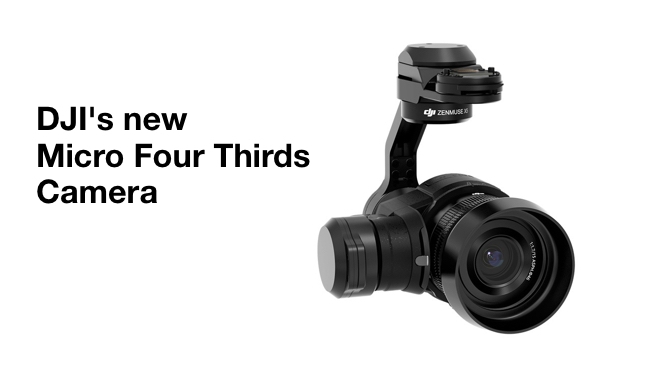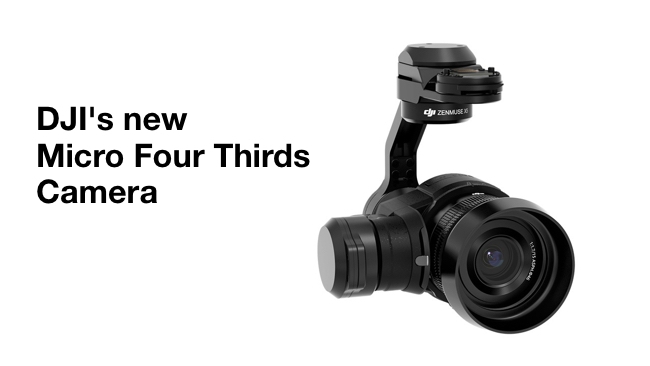
 An aerial game-changer? DJI's new X5
An aerial game-changer? DJI's new X5
It has been rumoured for a while now, with working models being spotted in the field over the last couple of months or so. But now DJI has finally announced what every Inspire1 owner has been hoping for. A new camera. Well, in fact two new cameras…the X5 and the X5R.
Not so very long ago DJI joined the Micro Four Thirds Consortium, a move that rather went under the radar in terms of its significance for a good many people. It was thought that perhaps this might lead the way for a development to the higher end of DJI’s lines, perhaps for the S900 and S1000 frames, or even a super advanced Inspire 2.
However an upgraded camera for the Inspire 1 has always been on the cards. It was after all designed as a modular mounting, with DJI themselves stating upon the Inspire’s release that the mount allowed for upgraded cameras to be attached. Now the wait is over.
And what a bombshell it is! Using a M4/3 sensor and a choice of three prime lenses, a 12mm f/2.0 and two 15mm f/1.7 variations. While they cannot record in the hoped for Prores codecs, the recording specs of the pricier X5R does include the ability to record 4K raw! These three specifications are game changing in the world of aerial video. Actually it is earth shattering.
To put things into perspective if you wanted an aerial system that offered increased quality over the existing Inspire 1 you would need to purchase a multi-rotor frame that could carry a camera such as the GH4 or the Sony A7S. This would not only involve a much larger and heavier multi rotor system, but you would have to either build it yourself, or have an expert construct it for you.
Once you have added in the cost of the camera, transmitter, Lightbridge, ground station, and the batteries you would require to run such a system effectively you are looking at a rather considerable investment far and away higher than for an Inspire 1. You would also end up running dangerously close to the 7kg limit that could affect the restrictions on where you can fly.
It will be interesting to see whether the compression codec has improved on the base level camera, offering as it does the same 60Mb/s bitrate as the existing X3 camera. This may well leave owners wondering why to upgrade to this rather than the slightly heavier but more capable X5R. If the codec has improved then it might well be a good option for those on a budget.
Both cameras offer a claimed 12.8 stop dynamic range. The X5R comes with a 512GB SSD to handle RAW video recording, which is obtained in the CinemaDNG format. It is not stated whether this is the lossless compressed variation or not. Both cameras can also be controlled remotely with the standard Inspire control software. However while the cameras offer auto focus DJI have also made available a special follow focus control system as well as an option. In addition 16 Mp raw stills can be taken.
However the new cameras are not cheap. The base level X5 retails for £1800 while the R version costs a hefty $7999. The added weight also means that flight times may well be halved using the current batteries, not only from the weight but the increased power draw.
Such an announcement may well rankle those who have invested in higher end equipment. However the Inspire 1 is still a quadcopter with none of the redundancy that is offered by hex, octo, or X8 configurations, and if your production requires a Red Epic then the Inspire is hardly going to impinge on that!
Regardless this is a huge development from DJI, and it may have repercussions for the future should they take camera development even further.
Tags: Production



Comments